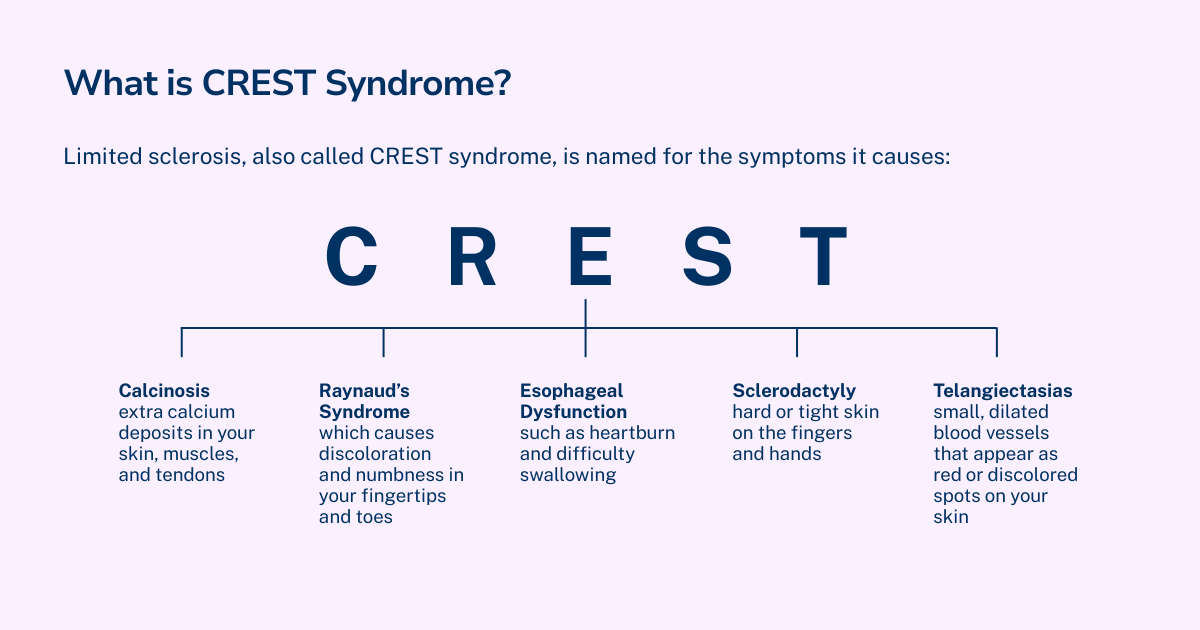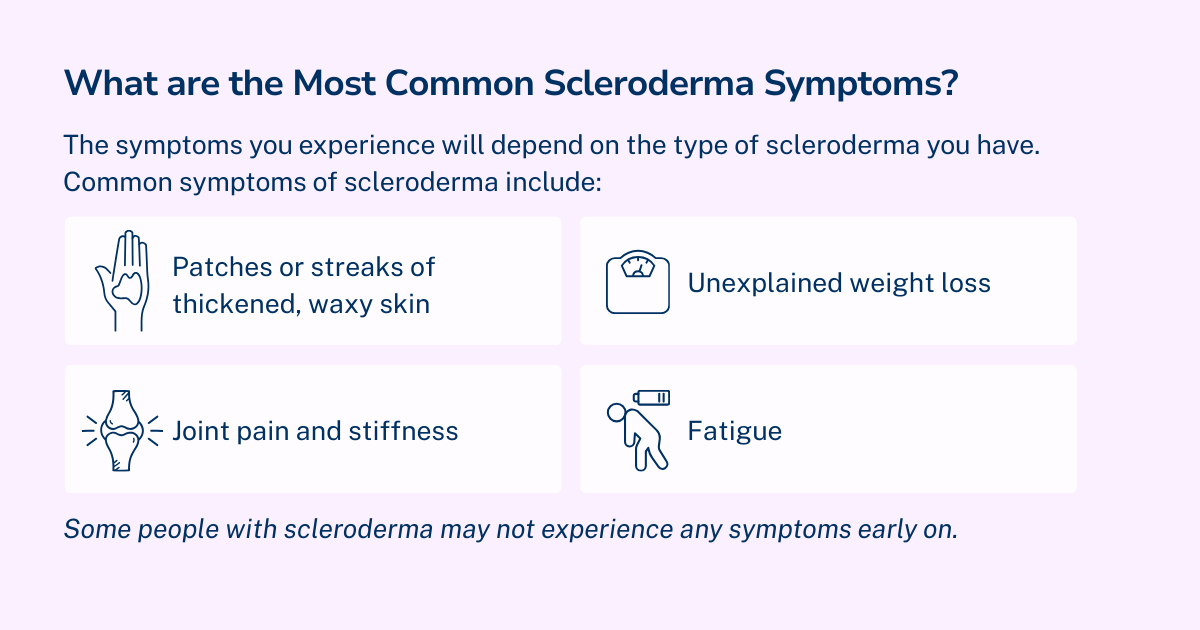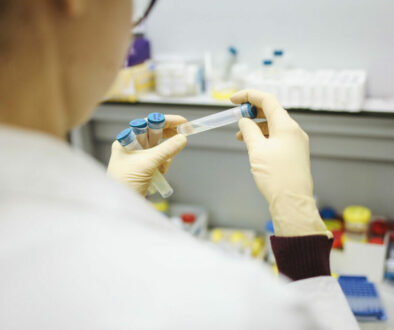Our Treatments for the Types of Scleroderma: Providing Relief
In this article:
If you’re experiencing changes in your skin texture or other symptoms for unknown reasons, the autoimmune condition known as scleroderma could be a possible explanation. There are two main types of scleroderma, both of which can affect the skin. If you’re dealing with skin symptoms you don’t have an answer for, this article may help.
Autoimmune disorders can be challenging to treat, and they can dramatically impact your life. We understand, as we have seen many patients who are facing these same challenges. The good news is that we can provide help and relief through our comprehensive scope of services. Contact us to schedule an appointment.
We’ll review the types of scleroderma and their symptoms, along with the risk factors of scleroderma, how it’s diagnosed, and the treatment options available.
What is Scleroderma?
Scleroderma is an autoimmune disorder that causes your body to produce excessive amounts of collagen, a protein that provides structural support to the body’s tissues. Because it’s an autoimmune condition, it causes your immune system to attack your body instead of protecting it.
The result is tissue that is thicker than normal. Though it usually affects the skin, scleroderma can also affect tissue throughout your body and lead to serious complications.
What Are The Different Types of Scleroderma?
The two main types of scleroderma are localized scleroderma and systemic scleroderma, also known as systemic sclerosis.
Localized Scleroderma
In localized scleroderma, only one part of your body, such as the skin, is affected. It causes the appearance of thick patches or lines of waxy skin. Localized scleroderma is relatively mild, usually doesn’t spread to other parts of your body or affect the internal organs, and in some cases, it can improve on its own.
Systemic Scleroderma
Systemic scleroderma can affect the skin along with other parts of your body, such as the blood vessels, muscles, joints, respiratory or digestive system, and internal organs including the esophagus, kidneys or heart.
When the connective tissue of organs becomes hard and fibrous, they function less efficiently. This can be serious, as it may cause difficulty breathing, problems processing food and other complications. There are three subtypes of systemic sclerosis, known as diffuse, limited and sine sclerosis.
Systemic Sclerosis Subtypes
- Diffuse sclerosis can cause thick or hardened skin over larger areas of the body, including your arms, abdomen, face, chest and legs. It may also affect several organs at once, such as your kidneys, heart, lungs and digestive system.
- Limited sclerosis, also called CREST syndrome, is named for the symptoms it causes:

- Sine sclerosis, also known as systemic sclerosis sine scleroderma (SSSc), is an uncommon form of systemic sclerosis in which your skin is not affected. While skin thickening (sclerodactyly) does not occur, any other symptoms of CREST may still be present.
Scleroderma is rare, affecting around 300,000 people in the United States.
What are the Symptoms of Scleroderma?

- Localized scleroderma symptoms are usually limited to skin thickening, which may occur in just one area, or appear in patches in several areas, such as your chest, abdomen, arms and legs, hands and fingers, or feet and toes. Localized scleroderma doesn’t usually affect your internal organs.
- Systemic sclerosis may cause many symptoms, including thickened skin across larger areas of your body, along with additional symptoms that affect your organs and tissues, such as:
- Numbness and swelling in your hands and feet
- Joint stiffness and swelling or loss of mobility
- Coughing and shortness of breath
- Difficulty swallowing
- Digestive issues such as heartburn, bloating, constipation or diarrhea
- Heart issues such as abnormal heartbeat, fluid buildup around your heart, or fibrosis (thickened heart muscle)
- Kidney failure
- Issues of the genitals, such as erectile dysfunction or vaginal dryness
How Is Scleroderma Diagnosed?
We can diagnose scleroderma with a physical exam and a few tests. You may need to see a rheumatologist, a doctor who specializes in autoimmune disorders.
Because rheumatoid arthritis (RA) and scleroderma can share similar symptoms in the early stages, it’s important to rule out RA, along with other conditions that may be causing your symptoms before diagnosing you with scleroderma.
These tests may include:
- Endoscopy (looking inside your body with a camera attached to a long, thin tube)
- Blood tests
- Pulmonary function tests
- Biopsy, in which a sample of the affected skin or tissue is removed and sent to a lab for testing.
Your doctor may also recommend some image tests such as:
- Chest X-ray
- CT scan
- Electrocardiogram (ECG)
What are the Risk Factors of Scleroderma?
While anyone can develop scleroderma and the exact causes are unknown, gender, age and race play a role. Here’s what we know about those at higher risk for scleroderma:
- Women are four times more likely to experience scleroderma than men.
- Most cases of localized scleroderma occur before age 40, and systemic types of scleroderma are often diagnosed between the ages of 30 and 50.
- Localized scleroderma is more common in people of European descent, while African Americans have a higher risk of systemic scleroderma, usually develop it earlier and may be more likely to have severe skin symptoms and symptoms that affect their lungs.
How is Scleroderma Treated?
Scleroderma has no cure, but there are treatments available that can help manage its symptoms. Speak to us to determine the best remedy for you based on the type of scleroderma you have and the severity of your symptoms.
Treatments for scleroderma may include:
-
- Creams, moisturizers and other skin treatments to keep your skin from drying out
- Immunosuppressants, drugs that prevent your immune system from attacking healthy cells and tissues
- Physical therapy to help improve flexibility, strength and range of motion
- Phototherapy, also known as light therapy, uses bright, ultraviolet (UV) light to treat skin conditions such as thickened skin
- Medicines to control symptoms caused by scleroderma, such as those used to:
- Regulate blood pressure
- Manage kidney failure
- Alleviate digestive issues
- Help with lung problems
- Manage other complications
- Anti-inflammatory medications to help reduce inflammation and pain
- Stem cell transplants to replace damaged cells
Lifestyle approaches may also help manage symptoms. These include:
- Implementing a healthy diet and exercise plan
- Managing stress to help reduce symptoms
- Getting regular dental cleaning and checkups
- Protecting your skin with high-quality sunscreen when you’re outdoors
- Avoiding smoking, as it can worsen scleroderma symptoms
Get Relief for Scleroderma Symptoms from Our Leading Board-Certified Rheumatologist in Raleigh
Scleroderma can cause many different symptoms, and some of those symptoms are the same as you may experience with other conditions. This makes it challenging to determine if what you have is scleroderma or another illness, which is why it’s important to see a trained specialist.
Leading board-certified rheumatologist Dr. Chaudhary at Raleigh Adult Medicine diagnoses and treats autoimmune conditions such as scleroderma. He sees patients for non-surgical evaluations and can help you manage the symptoms of this chronic illness and minimize how much it affects your daily life.
We invite you to schedule an appointment today.
Key Takeaways:
- Scleroderma is an autoimmune disorder. Autoimmune disorders occur when your immune system mistakenly “attacks” healthy cells.
- There are two types of scleroderma: Localized and systemic.
- Scleroderma symptoms can include:
- Thick, waxy skin
- Joint pain
- Fatigue
- Unexpected weight loss
- While there is no cure for scleroderma, we can create a plan for you to help manage its symptoms.
The content within this article and others on this website is only for educational purposes and should not be considered as medical advice. For any questions or concerns, please consult with your healthcare provider.
Sources:
- Cleveland Clinic, “Scleroderma,”
https://my.clevelandclinic.org/health/diseases/scleroderma - Johns Hopkins Medicine, “Scleroderma Lung Disease,” https://www.hopkinsmedicine.org/news/articles/2020/02/scleroderma-lung-disease-the-best-protocol-for-early-detection-and-treatment
- Scleroderma.org, “Scleroderma,”
https://scleroderma.org/types-of-scleroderma/




